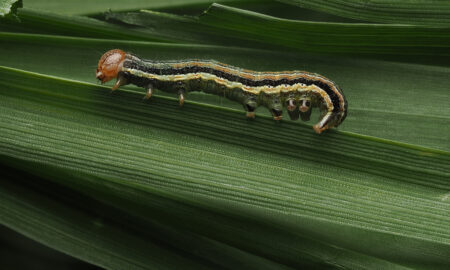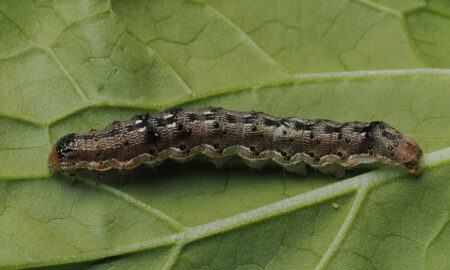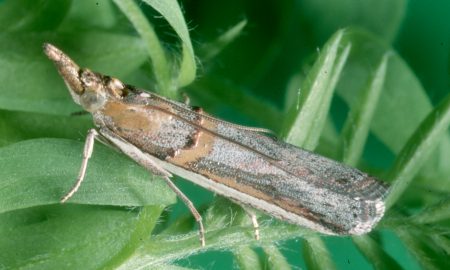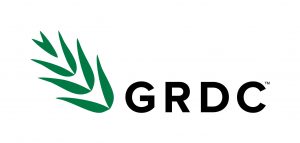Reports of armyworm are increasing as cereal crops near maturity in southeastern cropping regions.
If this is your experience, here’s what to know, and what to do next.
1. They aren’t fall armyworm
The term ‘armyworm’ covers several pest species of caterpillars from the same family (noctuid moths).
If you are finding armyworm in southeastern cereal crops right now, they are most likely:
- the common armyworm (Mythimna convecta)
- the southern armyworm (Persectania ewingii)
- or the inland armyworm (Persectania dyscrita).
A sample recently sent into our Pestfacts Southeastern service from the NSW Riverina was identified as the common armyworm.
These species can be confused for fall armyworm (Spodoptera frugiperda). However, fall armyworm migrates to the south during the warmer months as a summer cropping pest. This species isn’t expected to be an issue in winter crops in these regions.
2. Look for the 3 stripes
To identify common armyworm, southern armyworm and inland armyworm larvae, check for the 3 white stripes on the collar behind their head.
Sometimes, these stripes run down the length of their body.
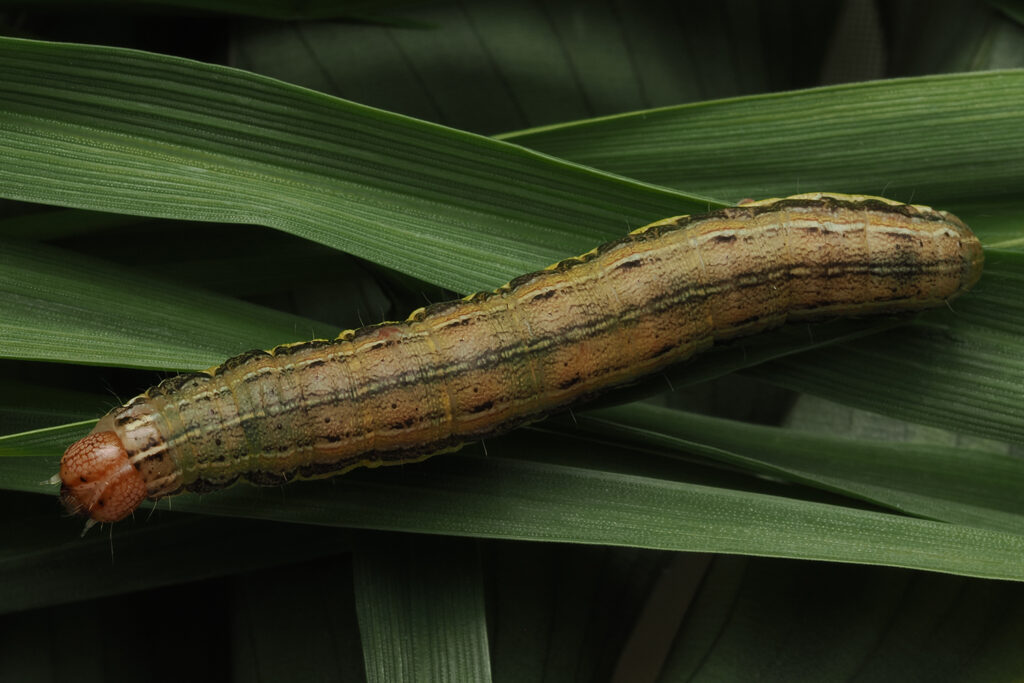
3. Cereals and grasses are the target; barley at highest risk
Common armyworm, southern armyworm and inland armyworm feed on cereals and grasses.
In fact, the moths of these species tend to lay their eggs in tight crevices of standing dried grasses, stubble and straw. This may explain why we hear of higher armyworm burdens in cereals sown into cereal stubble.
But not all cereals are equally at risk.
Barley is the most susceptible of the cereals to armyworm damage during spring. As the crop dries off, the last remaining green is just under the head, and larvae can chew through stems and ‘lop’ the heads completely.
Thicker stems make wheat and triticale less susceptible to head loss than barley, and multiple panicles per plant buffer oats against significant damage.
The larger larvae are more capable of head lopping; the highest risk scenario is a rapidly drying barley crop in the presence of armyworm 25–30 mm in size.
4. Search down low
Sweep nets are a key tool for monitoring crop canopies during spring; but it’s not the best tool for accurately monitoring armyworm larvae.
Armyworm are generally night feeders. During the day, they tend to shelter in the soil or amongst stubble, which means sweep nets often underestimate their numbers.
For a more accurate assessment of armyworm larvae numbers and size, we recommend combining a direct ground search with sweep net or beat sheet monitoring. Regular checks now can prevent costly surprises at harvest.
Need a hand on how to do a ground search? Watch a quick demo with QDAF entomologist Dr Melina Miles in the video below.
5. When to act
The rule of thumb for spray thresholds in cereals is 8–10 larvae per m².
But when barley is approaching ripening and is rapidly drying off, this threshold drops to 1–3 larvae per m², due to the increased risk of head lopping.
These thresholds have been estimated based on observations and judgements of experienced consultants and researchers.
If you’re after more info, give us a call! We can talk through what you’re seeing in the paddock and the best next steps.
Cover image: Photo by Julia Severi, Cesar Australia


